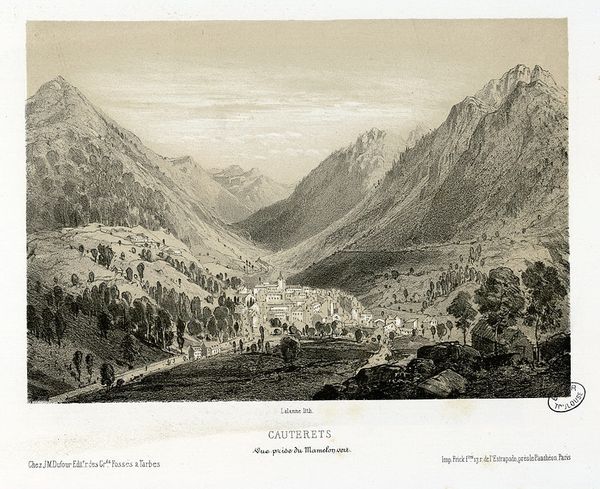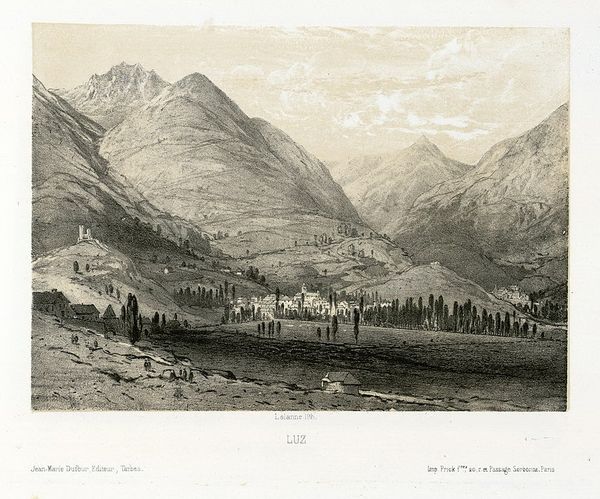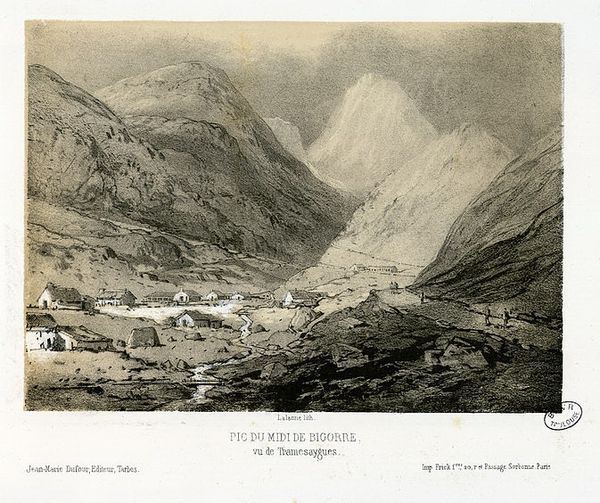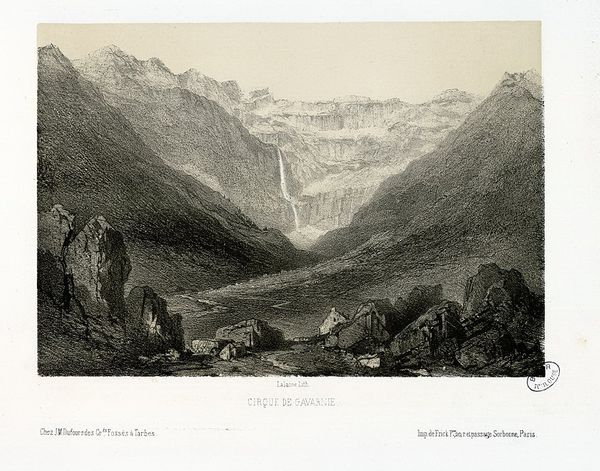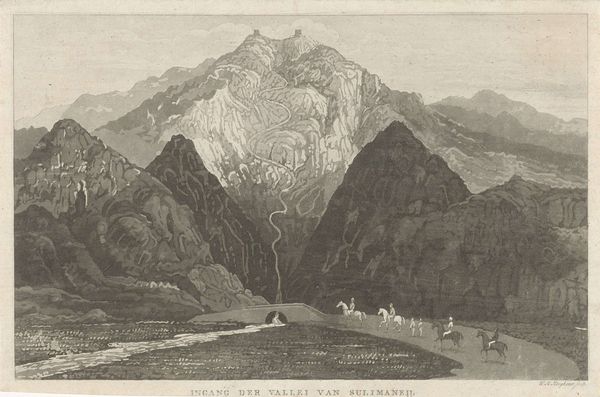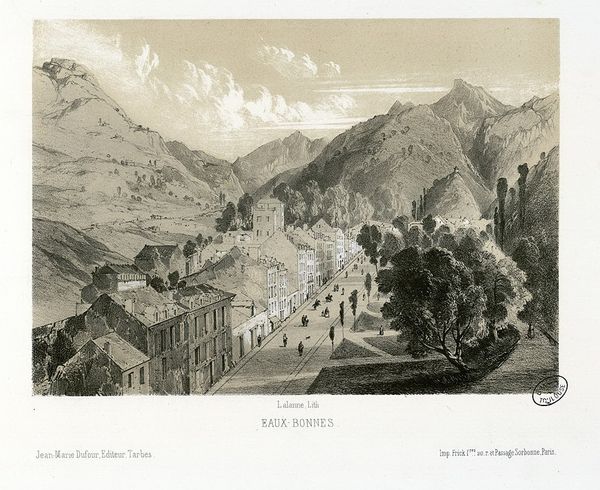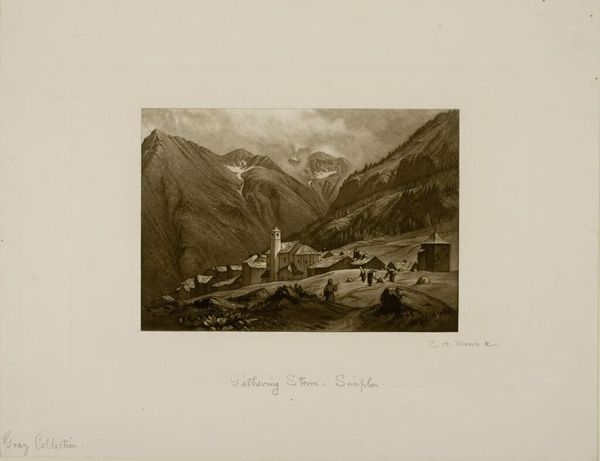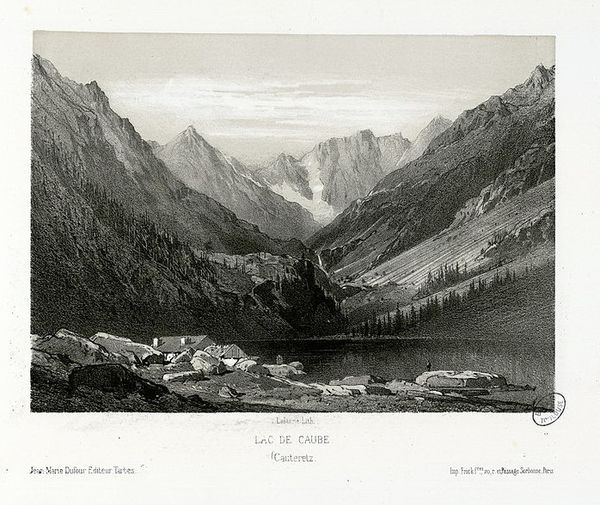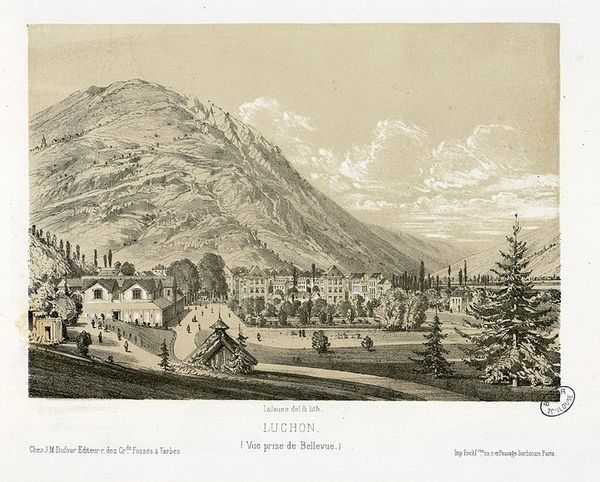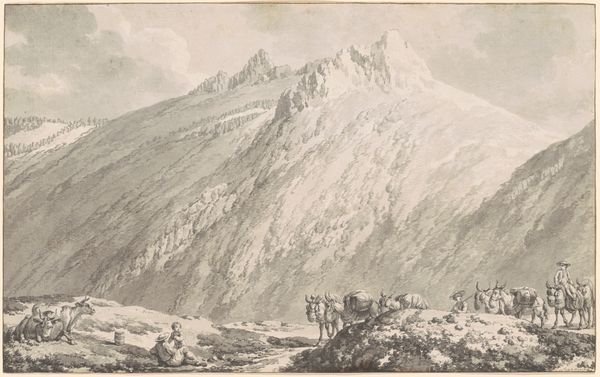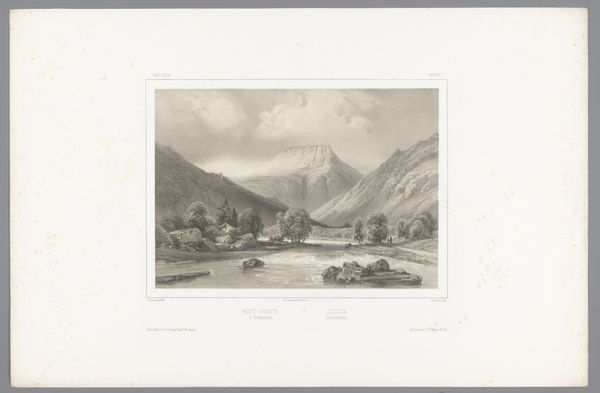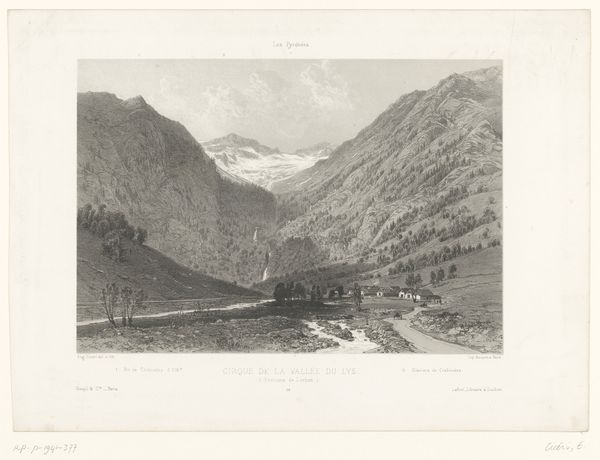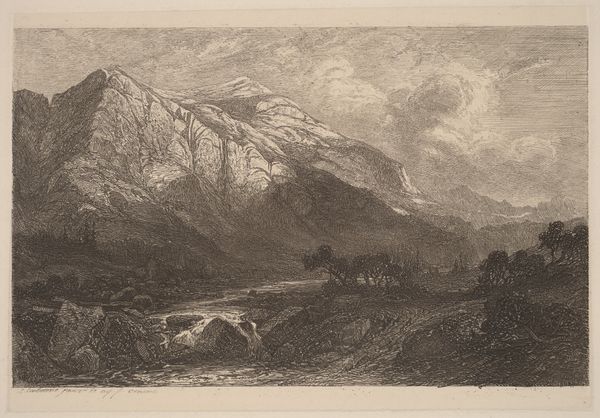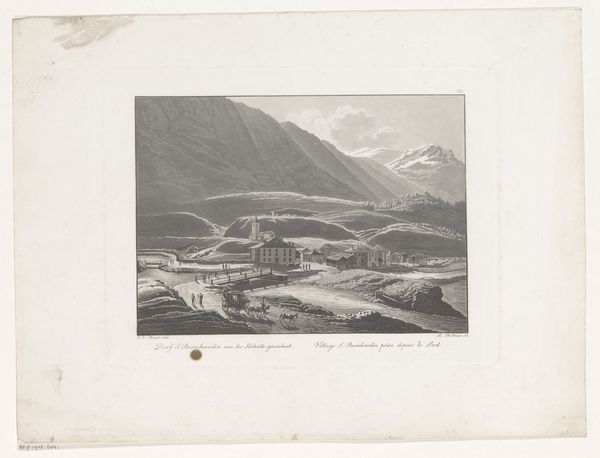
print, etching, photography, engraving
# print
#
etching
#
landscape
#
photography
#
romanticism
#
cityscape
#
engraving
Copyright: Public domain
Editor: Here we have Maxime Lalanne's "Route du Limaçon," an etching or engraving – possibly combined with photography – presenting a mountainous landscape. I’m struck by how the almost clinical detail given to the trees contrasts so vividly with the dramatic scale of the mountains. What jumps out at you when you look at this piece? Curator: The tension you observe between detail and drama speaks volumes. This print must be situated within the 19th-century shift toward Romanticism, where landscape became a vessel for national identity and sublime experience. Note how Lalanne presents the road, populated with tiny figures. How do you think this road functioned, not just physically, but also symbolically within the social context of the time? Editor: I guess I hadn't really considered that, but looking closer, the road seems to draw people into this dramatic landscape. Maybe it speaks to accessibility – or control over nature through infrastructure? Curator: Exactly. Consider the development of roadways and railways in the 19th century and the democratization of travel that followed. It brought more of the population into contact with regions previously considered remote. So the printing of this sort of picturesque scene played a role, actually a key one, in shaping the perceptions of the wider populace concerning issues such as expansion, adventure and concepts of progress. The image invites its viewers into participating of those ideals and benefits from them. Do you see an element of idealism within this piece, maybe even, propaganda of some sort? Editor: I suppose seeing those small figures makes me feel there's a relationship between man and the immensity of nature. I understand better how these printed images circulated romanticized ideals. Thanks, I’ll definitely remember that next time. Curator: Indeed, observing how socio-political dynamics affect image-making enriches one's understanding and, moreover, sharpens critical view and contextual awareness of works from any historical era. It gives a certain sensibility toward a wider picture that art provides.
Comments
No comments
Be the first to comment and join the conversation on the ultimate creative platform.
